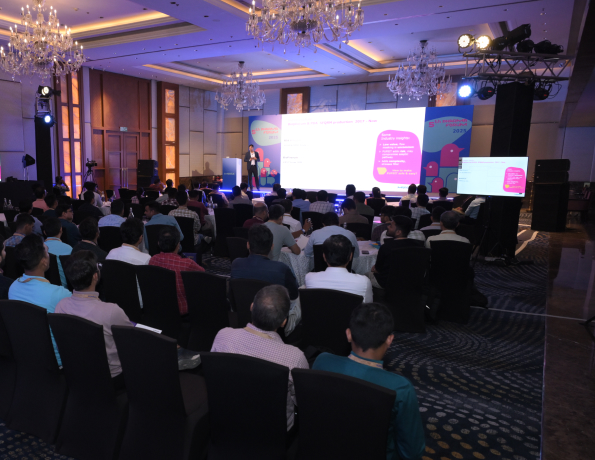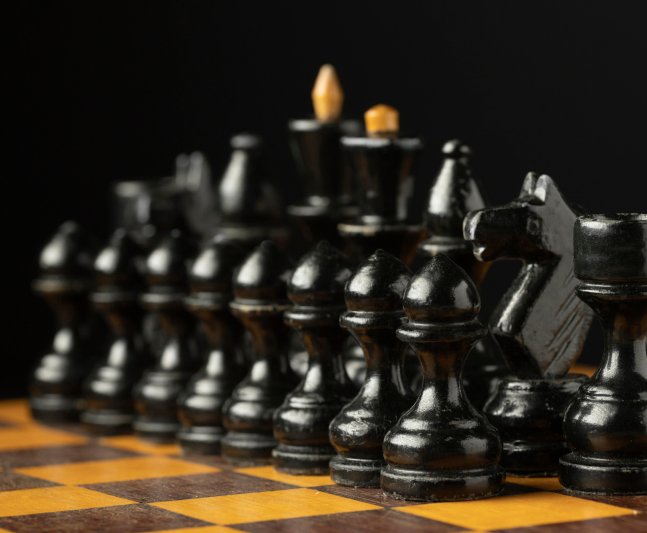Events and exhibitions remain some of the most powerful ways for brands to communicate their value, showcase innovations, and build lasting customer relationships. Typically, clients start by defining a set of key messages, the core ideas or values they want to share. These often highlight their strengths, innovations, or unique product benefits.
But here’s the catch: simply delivering a message isn’t enough anymore. Today’s trade shows and exhibitions are crowded, noisy places. Visitors don’t just want to hear your story; they want to experience it.
This blog breaks down the crucial difference between telling visitors what to think and designing an exhibition that helps them truly understand, believe, and remember your message. We’ll explain why focusing on visitor outcomes, the impressions, emotions, and understanding they take away is far more effective than just repeating your key messages. Plus, we’ll show how a strategic design approach can turn your booth into a memorable brand experience that drives lasting connections.
Messages vs. Meaningful Visitor Experiences
There’s a subtle but critical difference between delivering a message and creating a visitor outcome, and that difference can make or break your exhibition success.
Most clients arrive with a clear message or set of messages they want to convey. These typically reflect brand values, competitive strengths, or product innovations often tied to short-term campaigns or launches.
Imagine a science fair where the messaging goal is to convey that “Science fair is fun.” Delivering this message might mean hanging colorful banners, distributing brochures, or having a presenter simply state that fact. But will visitors actually leave thinking, “Science fair is fun”? Probably not.
To really internalize that idea, the exhibition must spark curiosity, invite hands-on engagement, and create memorable moments. Visitors need to experience the message, not just be told.
When exhibitions focus only on delivering messages, the experience often feels flat, transactional, and forgettable. Visitors skim the displays, leaving exhibitors frustrated by low engagement and poor brand recall.
It gets more complicated. Many commercial exhibitors have detailed reports and research highlighting specific areas where they need to shift or improve how visitors perceive their brand. These insights are goldmines, but they often don’t make it into the design brief. Without including these goals in your exhibition design, your booth misses its chance to deepen visitor understanding and strengthen brand positioning.
This is especially true for exhibitions focused on technical or educational topics, like “how machines work” or “optics.” These have huge potential to create powerful learning experiences but need thoughtful design elements, dedicated gathering spaces, live demonstrations, and interactive displays to bring those concepts alive. Without them, you lose the opportunity to educate visitors and build brand loyalty.
Designing for Visitor Outcomes, Not Just Messages
The secret to turning your booth into a memorable, impactful experience lies in focusing on visitor outcomes, the specific impressions, feelings, and understanding you want visitors to take away.
So, why should you focus on visitor outcomes? Well, visitor outcomes go beyond just repeating your key messages. They mean creating an experience that:
Engages multiple senses
A great exhibition lets visitors see, hear, touch, and interact with your brand and products. Multi-sensory engagement makes your message stick.
Fosters understanding
Visitors should connect the dots themselves, moving from passively hearing information to actively comprehending your brand’s story and value.
Builds emotional connections
Successful booths spark curiosity, excitement, or trust ;feelings that stay long after the visitor leaves.
Clearly stating your desired visitor outcomes in the design brief gives your design team the direction and freedom to create spaces that don’t just look impressive; they actually shift perceptions and build meaningful experiences.
Integrating Brand Perception and Marketing Strategy
Great exhibition design never happens in isolation. Your booth needs to align perfectly with your broader brand positioning and marketing goals.
That means:
Sharing detailed insights
Give your design team comprehensive info on brand perception, challenges, and opportunities. This ensures the booth supports your bigger marketing efforts.
Linking to campaigns
Whether it’s a product launch or sustainability initiative, your exhibition should extend and amplify your current marketing themes.
Leveraging brand assets
Use your existing visuals, narratives, and messaging frameworks in your booth. Consistency builds recognition and trust.
This way, your booth becomes a natural extension of your brand story, making every visitor interaction consistent, purposeful, and memorable.
Creating Spatial Storytelling and Interactive Experiences
One of the most powerful tools in exhibition design is spatial storytelling, the art of arranging your physical space to guide visitors on a clear, engaging narrative journey.
This includes:
Gathering spaces
Comfortable areas for groups to learn or watch live demos boost engagement and reinforce messages.
Live demonstrations
Whether it’s running a machine, showcasing a feature, or hands-on activities, demos make abstract concepts concrete and memorable.
Flexible layouts
Zones designed to support different activities and smooth visitor flow prevent crowding and keep people engaged longer.
For example, an industrial machinery booth might have a live demo station where visitors see a machine working in real time. Surrounding panels explain each step, helping visitors understand not just what the machine does, but why it matters, reinforcing the brand’s innovation.
This approach transforms passive browsing into active learning, leaving visitors with vivid, lasting impressions of your brand and value.
Maximizing Engagement Beyond the Booth
While booth design and visitor experience are critical, the exhibition journey begins long before show day and extends far beyond the booth visit itself.
Consider these additional steps to maximize engagement:
Pre-show communication
Use email campaigns, social media teasers, and personalized invitations to build anticipation and set expectations.
Staff-training
Your booth staff should be brand ambassadors, equipped not just to share messages but to guide visitors through your experience and foster conversations.
Post-show follow-up
Use data gathered at the booth, scanned badges, survey responses, or QR code interactions to follow up meaningfully, turning leads into lasting relationships.
By connecting every stage of the visitor journey, you amplify the impact of your exhibition investment.
Conclusion
Today’s exhibitions are no longer just about broadcasting messages. The most successful shows design visitor experiences that create genuine understanding, emotional connection, and lasting brand impressions.
By shifting your focus from simply delivering messages to crafting clear visitor outcomes, you elevate your exhibition from a static display to a powerful marketing asset.
Integrating your strategic brand goals, marketing insights, and spatial storytelling creates immersive experiences that truly resonate. This transforms casual passersby into engaged prospects and drives measurable business impact.
With Blues N Coppers, you can build experiences that go beyond basic messaging and truly connect with your audience. Let’s connect and discuss crafting your next show with real visitor impact.
FAQs
1. What is the difference between a key message and a visitor outcome
A key message is what you want to say about your brand or product. A visitor outcome is what you want visitors to think, feel, or understand after engaging with your booth. Outcomes focus on the experience, not just information.
2. Why is focusing on visitor outcomes more effective than just delivering messages?
Visitor outcomes engage emotions and understanding, leading to better recall and stronger brand connections. Simply delivering messages can feel like noise that visitors tune out.
3. How can I integrate marketing strategy into my exhibition design?
Share your marketing goals, campaign themes, and brand insights with your design team. Make sure your booth visuals, storytelling, and experience align with your broader brand narrative.
4. What are some ways to make my exhibition booth more interactive?
Include hands-on demos, live presentations, digital touchscreens, VR/AR experiences, or multi-sensory elements. Encourage visitor participation to make the message stick.
5. How important is staff training for exhibition success?
Very important. Well-trained staff act as brand ambassadors who can engage visitors, answer questions, and guide them through your booth experience effectively.
6. What should I do after the exhibition to maximize ROI?
Follow up promptly with leads collected, share personalized content or demos, analyze visitor data, and integrate insights into your sales and marketing efforts to nurture relationships.

.svg)




